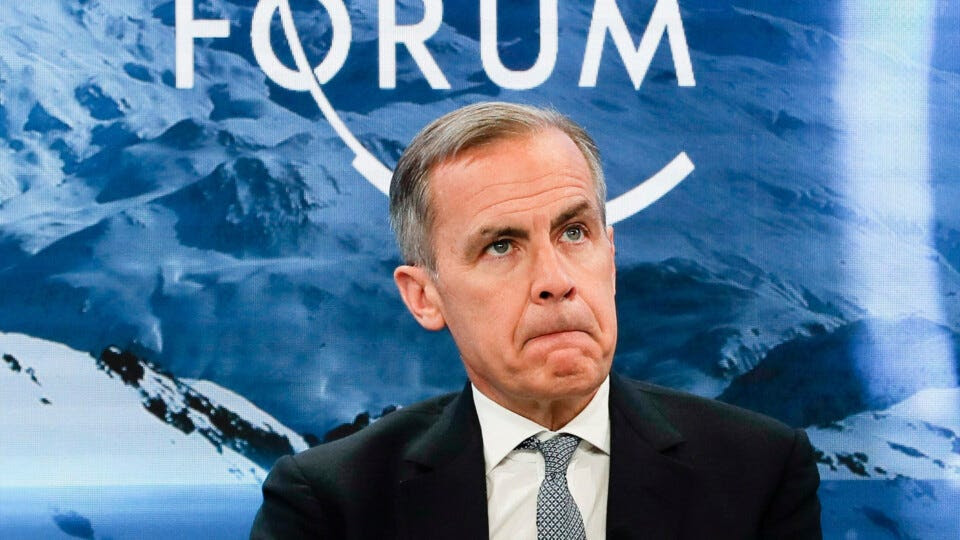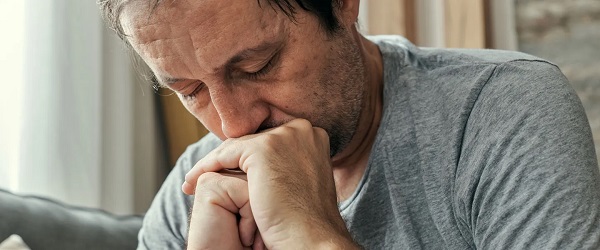National
Mark Carney’s Shocking Debate Meltdown

From Hamas Blunders to French Fumbles, the Globalist Golden Boy Crumbles on Stage
We had the French-language Liberal leadership debate last night, and let me tell you, folks—it was a sight to behold. Picture a stage in Montreal, packed with career politicians and establishment darlings, all vying to replace Justin Trudeau. The stakes? Enormous. The Liberal Party is on the verge of collapse, Donald Trump is looming over the border with trade war threats, and Canada’s economy is circling the drain. So, naturally, this was their big moment—a chance to prove they have what it takes to lead the country.
And then there was Mark Carney. The globalist golden boy. The guy the elites have been grooming for years. Former Bank of Canada boss, UN climate czar, best friends with every billionaire and bureaucrat from Davos to Brussels. If there’s anyone who should be able to handle a debate, it’s this guy. And yet?
He crashed. Hard. Because what we saw at the French-language Liberal leadership debate was nothing short of a political car crash—one that Mark Carney, the globalist golden boy, drove straight into a ditch. You’d think the guy who ran the Bank of Canada, played footsie with the UN, and spent years circling the elite cocktail party circuit would be able to handle a few tough questions. But no. Instead, we got a masterclass in stammering, dodging, and faceplanting in real-time.
Let’s start with the Hamas gaffe—because, oh boy, this was a doozy. They’re debating Canada’s stance on Israel and Palestine, and Carney, struggling through his Google Translate French, blurts out: “We all agree on Hamas on a two state.” Wait—what? Did he just say the Liberals agree with Hamas? Even Karina Gould, Trudeau’s handpicked heir-in-waiting, had to jump in and clean up his mess: “No, we don’t agree with the solution. We’re against Hamas.” Folks, this is a guy who’s spent decades rubbing elbows with world leaders, and he just accidentally aligned himself with a terrorist organization on live TV. The guy’s supposed to be an economic genius, but apparently, he can’t even manage basic sentence structure. And in Quebec? Where fluency in French actually matters? This wasn’t just a gaffe—it was an open admission that he’s an outsider with a script, and he can’t even read it right.
Then there’s the Quebec constitution debacle. Simple question: Will you recognize a Quebec constitution and Bill 96? You know, the law that cracks down on English like it’s a public health crisis? Carney’s answer? “I’m not a lawyer. I’m not a constitutional expert either. I’m a progressive.” Oh, that’s just rich. He’s not a lawyer, folks—just the guy who ran Canada’s central bank and negotiated international finance deals. But suddenly, when he’s asked to take a stand, he’s just a humble progressive. Meanwhile, Frank Baylis, the only candidate with a spine, calls Bill 96 “discriminatory” right to the camera, while Freeland and Gould trot out their usual Charter of Rights shtick. Carney? He pivots to attacking Pierre Poilievre for cutting CBC funding. Absolutely pathetic. In Montreal, dodging this question isn’t just cowardly—it’s political malpractice.
And what about the carbon tax? This is supposed to be Carney’s big moment. He’s the UN Climate Envoy, the guy who lectures entire countries about going green. So what does he say? “I’ll be canceling it on consumers and small businesses… replacing it with a system where big polluters pay.” Oh, wonderful. Except—what system? No details, no numbers, no real plan. Just a vague promise to make “big polluters” foot the bill. Sounds nice, but where have we heard this before? Oh right—every failed Liberal climate promise since 2015. Meanwhile, Gould is throwing out “15% emissions cuts” like it’s gospel, and Freeland is hammering home how Trudeau’s carbon tax saved Canada from climate doom. But Carney? Mr. Green Energy himself? He whiffs it.
And let’s not forget Energy East. With Trump ramping up tariffs and economic pressure, they ask the big question: Should Canada revive an east-west pipeline through Quebec? Carney’s answer? “It’s possible… if it’s in the interests of the whole country.” What does that even mean? “Possible”? “If”? Baylis, to his credit, comes out swinging—promising two gas pipelines and arguing they’d be good for both the economy and the environment. Freeland and Gould talk about “resilience” and “indigenous consultation” while sidestepping specifics. But Carney? He just flails around, dropping vague one-liners about being “masters in our own house.” Quebecers hate pipelines—we all know that—but if he had a real stance, he’d say it. Instead, he hedges like a man waiting for a pollster to whisper in his ear.
Then there’s his closing statement—his last shot to sell himself as Canada’s next leader. What does he deliver? “I’m not a career politician. I’m a pragmatist… Canada’s given me everything, I’m ready to give my all.”
Oh, give me a break. This has got to be the most insulting, hollow, out-of-touch line of the night. Carney is literally running to be prime minister, and somehow, he expects us to believe he’s not a politician? That’s like a guy auditioning for American Idol and claiming he’s not a singer. No, Mark—you’re a politician now. You’re begging for votes. You’re standing on stage, pandering like the rest of them. Own it.
And beyond the blatant dishonesty, let’s talk about how flat it all was. Baylis is out there promising the “best health system in the world” and pledging his loyalty to Quebec. Gould is hyping up “innovators and dreamers,” painting some grand Liberal utopia. Freeland? She’s going full war cry—rallying 400,000 Liberals against Trump like she’s leading a resistance movement. But Carney? He sounds like an AI-generated LinkedIn post. No passion, no fire, no vision. Just another soulless technocrat, hoping to win by default.
Look, I get it—Carney is the establishment’s dream. The global elites adore him. He’s got the right credentials, the right connections, and the charisma of a soggy paper towel. The guy spent decades shuffling between central banks and UN climate panels, never breaking a sweat, never making a tough call. But last night? Thrown into an actual political fight? He flopped harder than a beached fish.
If he can’t even hold his own in a controlled Liberal debate—against his own party, in front of a friendly audience—how on earth is he going to stand up to Donald Trump? Seriously. The guy panicked over a Quebec language question and somehow accidentally implied the Liberals support Hamas. Hamas! You think this man is ready to stare down the White House? To negotiate trade deals? To lead a country in crisis? Please.
If the Liberals are looking for a leader with real backbone, they’d better think twice before crowning this guy. Because if this performance was any indication—Carney’s not the future. This wasn’t a leader. This was a clipboard-carrying bureaucrat trying to convince us he’s Winston Churchill.
And if this is what the Liberals want to put up against Trump, Poilievre, or even a toaster with a personality, they’re in for a brutal, humiliating, can’t-look-away kind of reality check.
Subscribe to The Opposition with Dan Knight .
For the full experience, upgrade your subscription.
Alberta
Punishing Alberta Oil Production: The Divisive Effect of Policies For Carney’s “Decarbonized Oil”

From Energy Now
By Ron Wallace
The federal government has doubled down on its commitment to “responsibly produced oil and gas”. These terms are apparently carefully crafted to maintain federal policies for Net Zero. These policies include a Canadian emissions cap, tanker bans and a clean electricity mandate.
Following meetings in Saskatoon in early June between Prime Minister Mark Carney and Canadian provincial and territorial leaders, the federal government expressed renewed interest in the completion of new oil pipelines to reduce reliance on oil exports to the USA while providing better access to foreign markets. However Carney, while suggesting that there is “real potential” for such projects nonetheless qualified that support as being limited to projects that would “decarbonize” Canadian oil, apparently those that would employ carbon capture technologies. While the meeting did not result in a final list of potential projects, Alberta Premier Danielle Smith said that this approach would constitute a “grand bargain” whereby new pipelines to increase oil exports could help fund decarbonization efforts. But is that true and what are the implications for the Albertan and Canadian economies?
The federal government has doubled down on its commitment to “responsibly produced oil and gas”. These terms are apparently carefully crafted to maintain federal policies for Net Zero. These policies include a Canadian emissions cap, tanker bans and a clean electricity mandate. Many would consider that Canadians, especially Albertans, should be wary of these largely undefined announcements in which Ottawa proposes solely to determine projects that are “in the national interest.”
The federal government has tabled legislation designed to address these challenges with Bill C-5: An Act to enact the Free Trade and Labour Mobility Act and the Building Canada Act (the One Canadian Economy Act). Rather than replacing controversial, and challenged, legislation like the Impact Assessment Act, the Carney government proposes to add more legislation designed to accelerate and streamline regulatory approvals for energy and infrastructure projects. However, only those projects that Ottawa designates as being in the national interest would be approved. While clearer, shorter regulatory timelines and the restoration of the Major Projects Office are also proposed, Bill C-5 is to be superimposed over a crippling regulatory base.
It remains to be seen if this attempt will restore a much-diminished Canadian Can-Do spirit for economic development by encouraging much-needed, indeed essential interprovincial teamwork across shared jurisdictions. While the Act’s proposed single approval process could provide for expedited review timelines, a complex web of regulatory processes will remain in place requiring much enhanced interagency and interprovincial coordination. Given Canada’s much-diminished record for regulatory and policy clarity will this legislation be enough to persuade the corporate and international capital community to consider Canada as a prime investment destination?
As with all complex matters the devil always lurks in the details. Notably, these federal initiatives arrive at a time when the Carney government is facing ever-more pressing geopolitical, energy security and economic concerns. The Organization for Economic Co-operation and Development predicts that Canada’s economy will grow by a dismal one per cent in 2025 and 1.1 per cent in 2026 – this at a time when the global economy is predicted to grow by 2.9 per cent.
It should come as no surprise that Carney’s recent musing about the “real potential” for decarbonized oil pipelines have sparked debate. The undefined term “decarbonized”, is clearly aimed directly at western Canadian oil production as part of Ottawa’s broader strategy to achieve national emissions commitments using costly carbon capture and storage (CCS) projects whose economic viability at scale has been questioned. What might this mean for western Canadian oil producers?
The Alberta Oil sands presently account for about 58% of Canada’s total oil output. Data from December 2023 show Alberta producing a record 4.53 million barrels per day (MMb/d) as major oil export pipelines including Trans Mountain, Keystone and the Enbridge Mainline operate at high levels of capacity. Meanwhile, in 2023 eastern Canada imported on average about 490,000 barrels of crude oil per day (bpd) at a cost estimated at CAD $19.5 billion. These seaborne shipments to major refineries (like New Brunswick’s Irving Refinery in Saint John) rely on imported oil by tanker with crude oil deliveries to New Brunswick averaging around 263,000 barrels per day. In 2023 the estimated total cost to Canada for imported crude oil was $19.5 billion with oil imports arriving from the United States (72.4%), Nigeria (12.9%), and Saudi Arabia (10.7%). Since 1988, marine terminals along the St. Lawrence have seen imports of foreign oil valued at more than $228 billion while the Irving Oil refinery imported $136 billion from 1988 to 2020.
What are the policy and cost implication of Carney’s call for the “decarbonization” of western Canadian produced, oil? It implies that western Canadian “decarbonized” oil would have to be produced and transported to competitive world markets under a material regulatory and financial burden. Meanwhile, eastern Canadian refiners would be allowed to import oil from the USA and offshore jurisdictions free from any comparable regulatory burdens. This policy would penalize, and makes less competitive, Canadian producers while rewarding offshore sources. A federal regulatory requirement to decarbonize western Canadian crude oil production without imposing similar restrictions on imported oil would render the One Canadian Economy Act moot and create two market realities in Canada – one that favours imports and that discourages, or at very least threatens the competitiveness of, Canadian oil export production.
Ron Wallace is a former Member of the National Energy Board.
Fraser Institute
Long waits for health care hit Canadians in their pocketbooks

From the Fraser Institute
Canadians continue to endure long wait times for health care. And while waiting for care can obviously be detrimental to your health and wellbeing, it can also hurt your pocketbook.
In 2024, the latest year of available data, the median wait—from referral by a family doctor to treatment by a specialist—was 30 weeks (including 15 weeks waiting for treatment after seeing a specialist). And last year, an estimated 1.5 million Canadians were waiting for care.
It’s no wonder Canadians are frustrated with the current state of health care.
Again, long waits for care adversely impact patients in many different ways including physical pain, psychological distress and worsened treatment outcomes as lengthy waits can make the treatment of some problems more difficult. There’s also a less-talked about consequence—the impact of health-care waits on the ability of patients to participate in day-to-day life, work and earn a living.
According to a recent study published by the Fraser Institute, wait times for non-emergency surgery cost Canadian patients $5.2 billion in lost wages in 2024. That’s about $3,300 for each of the 1.5 million patients waiting for care. Crucially, this estimate only considers time at work. After also accounting for free time outside of work, the cost increases to $15.9 billion or more than $10,200 per person.
Of course, some advocates of the health-care status quo argue that long waits for care remain a necessary trade-off to ensure all Canadians receive universal health-care coverage. But the experience of many high-income countries with universal health care shows the opposite.
Despite Canada ranking among the highest spenders (4th of 31 countries) on health care (as a percentage of its economy) among other developed countries with universal health care, we consistently rank among the bottom for the number of doctors, hospital beds, MRIs and CT scanners. Canada also has one of the worst records on access to timely health care.
So what do these other countries do differently than Canada? In short, they embrace the private sector as a partner in providing universal care.
Australia, for instance, spends less on health care (again, as a percentage of its economy) than Canada, yet the percentage of patients in Australia (33.1 per cent) who report waiting more than two months for non-emergency surgery was much higher in Canada (58.3 per cent). Unlike in Canada, Australian patients can choose to receive non-emergency surgery in either a private or public hospital. In 2021/22, 58.6 per cent of non-emergency surgeries in Australia were performed in private hospitals.
But we don’t need to look abroad for evidence that the private sector can help reduce wait times by delivering publicly-funded care. From 2010 to 2014, the Saskatchewan government, among other policies, contracted out publicly-funded surgeries to private clinics and lowered the province’s median wait time from one of the longest in the country (26.5 weeks in 2010) to one of the shortest (14.2 weeks in 2014). The initiative also reduced the average cost of procedures by 26 per cent.
Canadians are waiting longer than ever for health care, and the economic costs of these waits have never been higher. Until policymakers have the courage to enact genuine reform, based in part on more successful universal health-care systems, this status quo will continue to cost Canadian patients.








